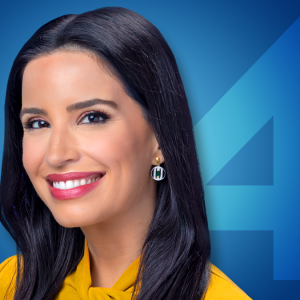MILWAUKEE - An analytics company just released a list of the best places for African-Americans to live economically, in 2023.
Out of all the largest cities in the U.S., Milwaukee ranked fourth - worst.
View a breakdown of the list below:
Financial analytics company SmartAsset broke down their findings into three categories: Median Income for a Black family, percentage of African-Americans in the workforce, and those who have a bachelor's degree. Out of 133 cities, Milwaukee finished nearly at the bottom, number 130.
We showed the homeownership disparities to Angela Walters, the first Black chairwoman for the Greater Milwaukee Association of Realtors, which revealed 28 percent of African-Americans living in Milwaukee are homeowners, which is 34 percent lower than the best-ranked city in the country: Murfreesboro, Tennessee.
"I'm saddened by it but I'm not surprised," said Walters.
According to the National Association of Realtors, 4 percent of Milwaukee-area home buyers last year were Black, while 93 percent were white.
Walters said that statistic included home buyers in Milwaukee, Ozaukee, Walworth and Waukesha counties. "It was post-pandemic where lots of buyers were out there and to say only 4 percent were African-American, that's really disheartening."
She believes the history of redlining and systemic racism caused her Black clients to stay within Milwaukee neighborhoods, instead of buying homes in the suburbs. Also, she says in her experience, "some of these neighborhoods are not welcoming even today for people of color. We all benefit when there is diversity and so when someone is selling their home, if they were to limit the buyers who come into the property, they are really shooting themselves in the foot."
Another statistic that went into ranking our city was our workforce. 59 percent of African-Americans living in Milwaukee are working, 19 percent lower than the best-ranked city.
We showed these numbers to Milwaukee business owner Ed Hennings, who said, "None of this surprises me."
The entrepreneur says he refuses to be another statistic, after serving 20 years in prison. "I took the route of learning skills," he says.
He got his barber license behind bars. "I think me hitting rock bottom kinda showed me that there's something different to this. So I started to take an extraordinary path."
It led him to owning a barber shop, and now a trucking business where he employs those who have been incarcerated. "If you just stay focused on your goals and just keep working, that blessing or that lesson will reveal itself after you get through the storm."
The final statistic in this study shows 14 percent of African-American Milwaukee residents have a bachelor's degree. We reached out to the University of Wisconsin system and Marquette University, to learn how they are making tuition more equitable.
A University of Wisconsin-Milwaukee spokesperson replied:
At UWM, we are committed to eliminating long-standing equity gaps and making sure that students of color graduate at the same rate as white students. We recognize that affordability is a key factor in attending college for all students.
We take a hands-on, comprehensive approach to supporting students with addressing the overall cost of attendance. Some examples include:
Providing students and families support in completing the FAFSA as well as connections to UWM's Panther Scholarship Portal UW System's Wisconsin Tuition Promise program
which starts in Fall 2023. This new initiative was launched to ensure underserved Wisconsin students can attend any UW System university without paying tuition or fees. Working with generous donors to offer financial support like retention grants and emergency grants that can help bridge the gap for students.
Broadly, we're also focused on efforts to improve college attainment across the region through collaborations like M-Cubed, which widens the pipeline of prepared college students; and the Moon Shot for Equity, which takes a wide-ranging approach to remove obstacles and create solutions aimed at closing equity gaps in higher education.
Marquette University Spokesperson Monica MacKay replied:
Improving educational access has been a historical priority at Marquette. In 1909, Marquette became the first coeducational Catholic university in the world, and in 1969, Marquette founded the first Educational Opportunity Program in the nation, which has earned a reputation as one of the most distinguished, admired and respected federal TRIO programs.
As recently as 2020, Marquette committed to improving the experience of Black students on campus and fostering a more inclusive and welcoming environment by adding 40 new scholarships in 2021 to attract and educate students from our surrounding community through our Urban Scholars Program and hiring a director of Black Student Initiatives to track the progress of campus initiatives aimed at increasing recruitment and retention of Black students and improving the campus climate.
Further, Marquette remains committed to becoming a Hispanic-Serving Institution. Intentional recruiting efforts have grown the number of Hispanic undergraduate students enrolled at Marquette from 9% in 2015 to 13% of the undergraduate student body in 2022. 15% of the current first-year undergraduate class identifies as Hispanic or Latinx, and Hispanic graduate/professional student enrollment grew from 5.9% to 9% during 2016-22.
Lastly, preparing students to lead means ensuring their experiences and environment are representative of the world beyond our campus. Right now, Marquette's student body is the most diverse in history. Students of color now make up over 28% of our total student population, and more than 22% (1 in 5) of our undergraduate student population is first-generation. Since President Michael R. Lovell joined Marquette eight years ago, the university has doubled the percentage of Black students in the incoming class (from 3% to 6%) and Hispanic students in the incoming class (from 7% to 18%). During the past five years, the diversity of graduate and professional classes has increased from 16.2% to 22.4%. And we welcome international students from more than 80 countries to campus every year, enriching our culture with a variety of voices.




